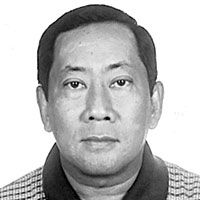Politicians: The Pinoy version of the Samurai!

December 7, 2005 | 12:00am
Dec. 7 will always be remembered in the United States of America as a "Day of Infamy" when Japan engineered the most daring undeclared attack under the command of Admiral Isoroku Yamamoto on the American naval base in Pearl Harbor in the Hawaiian islands, which ushered in World War II. In the Philippines, thanks to the international dateline, we commemorate that day on Dec. 8. We, too, had our share of Japanese aggression when Japanese zeros bombed the Cavite naval base.
That was 64 long years ago and today, the world has seen the Japanese people radically transformed from being one of the most vicious and warlike people whose hearts longed for the conquest of other countries, and turned from a feudal society to a real working democracy where the will of the people reigns supreme. Many historians attribute this transformation to the leadership of the late Gen. Douglas MacArthur who virtually ruled Japan after its surrender to the Americans in 1945, giving Japan its present day constitution.
That constitution ordained for Japan to no longer maintain armies for aggression, but rather for its own "self-defense." Hence, the Japanese military today is known as the Japan Self-Defense Forces. Thanks to Japan’s economic strength, its Self-Defense Forces are better trained and better equipped than most military forces in this region. In contrast, our military is the most poorly equipped and ill-trained, but thanks to ongoing communist and Muslim insurgencies, we have the most combat-experienced soldiers in the world.
However, Japan’s transformation didn’t happen after its humiliating defeat in World War II. Its transformation really began in the mid-1800s during the reign of the Meiji Emperor. For those who hate reading books, you can watch the Tom Cruise movie, The Last Samurai (I’m reading the book The Last Samurai by Mark Ravina), to get a full understanding of Japan’s shift from its medieval past, represented by the Samurai who virtually had a monopoly on military service and government offices and who was the valiant protector of the Imperial Throne, to a new Japan where the military is composed of conscripts from the commoner class and funded by the government through taxes.
I’m writing this piece not to talk about the Last Samurai, but rather to find parallels that we could use especially when we’re in the midst of changing our Constitution into a parliamentary and hopefully, a federal system of government. The question we must face is, whether we should completely discard the old Philippine political system, which in the last hundred years brought us only poverty, corruption, political instability and leaders who have made a family business out of politics!
The Last Samurai is the story of Saigo Takamori, Japan’s most honored Samurai. In 1864, he staged a coup to restore the Meiji Emperor to the Imperial Palace not realizing that the Emperor had a mission to modernize Japan in the face of a world that had acquired new weapons and tactics. The Emperor knew that the Samurai would be no match to the new firepower that most nations had already started to use.
Thus, in 1872, the Emperor signed an edict creating the conscript Army and abolished all Samurai privileges, including their ancient right to carry swords. This split Japan into the new Japan, represented by the Meiji Emperor, and the old Japan, which the Samurai warlord Saigo Takamori wanted to preserve… or so he thought.
The day of reckoning happened on Sept. 24, 1877 on the hills of Shiroyama behind the famous Kagoshima Castle, which is now the Kagoshima Prefecture, where Saigo’s 30,000 Samurai forces battled the new Japanese Imperial Army, which was composed of conscripted commoners, while the Samurai warriors were revered as the knights of their day. But as history teaches us, swords are no match to artillery and the repeating rifle. As the author Mark Ravina wrote: "The two armies were also fighting for two different visions of Japan." Keeping the old or ushering in a new Japan?
Saigo Takamori was for the restoration of Samurai honor and the Bushido code and their ancient rituals, while the Emperor wanted a modernized Japan. The old Japan fought the new Japan on Sept. 24, 1877 and the Samurai lost. Now Saigo has been turned into Japan’s most popular legend.
We can learn much by reading the book or seeing the movie The Last Samurai as we, too, are in the crossroads of change in creating a new Philippines or keeping the old one. Thankfully, Filipinos are not as warlike as the old Japanese were in those days; we do not need to go somewhere and fight each other for what we think is the right thing to do.
On one hand, we have people who want to keep the powers of old Imperial Manila… who for so many decades have ruled the Philippine archipelago to the point of even promoting its own Tagalog language to be the spoken language of the Filipino people, to the utter disrespect and detriment of the other spoken languages of this nation. Thus, other languages spoken by many people in this archipelago are slowly dying out and fast becoming extinct as the dinosaur. Yet, Imperial Manila questions us why we are not united as a nation. The answer, of course, is simple: respect is earned, not demanded. You can only earn the respect of others when you start respecting them.
To my mind, today’s senators and congressmen are our version of the Samurai, who want to keep their privileges, power and status. This is why despite what Consultative Commission (con-com) chairman Dr. Jose "Pepe" Abueva has been texting me that federalism is being embraced by a great majority of Filipinos, federalism, though, is in peril even inside the con-com, thanks to the feudal lords or the Pinoy version of the Samurai. The politician won’t yield his selfish ambitions for the betterment of a new Philippines.
What I found appalling was President Gloria Macapagal-Arroyo’s "compromise" with Congress… giving the politicians what they’ve always wanted… to keep their political power and wealth through a new system, which is the parliamentary system of government, but yet leaving the question of a federal system into the hands of these Samurais in our midst. Again, the Filipino people should not be misled by glib-tongued politicians who tell us that we are not ready for federalism. India and Germany embraced federalism when their nations were in tatters. I don’t see any reason why Filipinos cannot embrace it. Let’s get rid of the old and usher in a new Philippines!
For e-mail responses to this article, write to [email protected]. Bobit Avila’s columns can also be accessed through www.thefreeman.com. He also hosts a weekly talkshow, "Straight from the Sky," shown every Monday, at 8 p.m., only in Metro Cebu on Channel 15 of SkyCable.
That was 64 long years ago and today, the world has seen the Japanese people radically transformed from being one of the most vicious and warlike people whose hearts longed for the conquest of other countries, and turned from a feudal society to a real working democracy where the will of the people reigns supreme. Many historians attribute this transformation to the leadership of the late Gen. Douglas MacArthur who virtually ruled Japan after its surrender to the Americans in 1945, giving Japan its present day constitution.
That constitution ordained for Japan to no longer maintain armies for aggression, but rather for its own "self-defense." Hence, the Japanese military today is known as the Japan Self-Defense Forces. Thanks to Japan’s economic strength, its Self-Defense Forces are better trained and better equipped than most military forces in this region. In contrast, our military is the most poorly equipped and ill-trained, but thanks to ongoing communist and Muslim insurgencies, we have the most combat-experienced soldiers in the world.
However, Japan’s transformation didn’t happen after its humiliating defeat in World War II. Its transformation really began in the mid-1800s during the reign of the Meiji Emperor. For those who hate reading books, you can watch the Tom Cruise movie, The Last Samurai (I’m reading the book The Last Samurai by Mark Ravina), to get a full understanding of Japan’s shift from its medieval past, represented by the Samurai who virtually had a monopoly on military service and government offices and who was the valiant protector of the Imperial Throne, to a new Japan where the military is composed of conscripts from the commoner class and funded by the government through taxes.
I’m writing this piece not to talk about the Last Samurai, but rather to find parallels that we could use especially when we’re in the midst of changing our Constitution into a parliamentary and hopefully, a federal system of government. The question we must face is, whether we should completely discard the old Philippine political system, which in the last hundred years brought us only poverty, corruption, political instability and leaders who have made a family business out of politics!
The Last Samurai is the story of Saigo Takamori, Japan’s most honored Samurai. In 1864, he staged a coup to restore the Meiji Emperor to the Imperial Palace not realizing that the Emperor had a mission to modernize Japan in the face of a world that had acquired new weapons and tactics. The Emperor knew that the Samurai would be no match to the new firepower that most nations had already started to use.
Thus, in 1872, the Emperor signed an edict creating the conscript Army and abolished all Samurai privileges, including their ancient right to carry swords. This split Japan into the new Japan, represented by the Meiji Emperor, and the old Japan, which the Samurai warlord Saigo Takamori wanted to preserve… or so he thought.
The day of reckoning happened on Sept. 24, 1877 on the hills of Shiroyama behind the famous Kagoshima Castle, which is now the Kagoshima Prefecture, where Saigo’s 30,000 Samurai forces battled the new Japanese Imperial Army, which was composed of conscripted commoners, while the Samurai warriors were revered as the knights of their day. But as history teaches us, swords are no match to artillery and the repeating rifle. As the author Mark Ravina wrote: "The two armies were also fighting for two different visions of Japan." Keeping the old or ushering in a new Japan?
Saigo Takamori was for the restoration of Samurai honor and the Bushido code and their ancient rituals, while the Emperor wanted a modernized Japan. The old Japan fought the new Japan on Sept. 24, 1877 and the Samurai lost. Now Saigo has been turned into Japan’s most popular legend.
We can learn much by reading the book or seeing the movie The Last Samurai as we, too, are in the crossroads of change in creating a new Philippines or keeping the old one. Thankfully, Filipinos are not as warlike as the old Japanese were in those days; we do not need to go somewhere and fight each other for what we think is the right thing to do.
On one hand, we have people who want to keep the powers of old Imperial Manila… who for so many decades have ruled the Philippine archipelago to the point of even promoting its own Tagalog language to be the spoken language of the Filipino people, to the utter disrespect and detriment of the other spoken languages of this nation. Thus, other languages spoken by many people in this archipelago are slowly dying out and fast becoming extinct as the dinosaur. Yet, Imperial Manila questions us why we are not united as a nation. The answer, of course, is simple: respect is earned, not demanded. You can only earn the respect of others when you start respecting them.
To my mind, today’s senators and congressmen are our version of the Samurai, who want to keep their privileges, power and status. This is why despite what Consultative Commission (con-com) chairman Dr. Jose "Pepe" Abueva has been texting me that federalism is being embraced by a great majority of Filipinos, federalism, though, is in peril even inside the con-com, thanks to the feudal lords or the Pinoy version of the Samurai. The politician won’t yield his selfish ambitions for the betterment of a new Philippines.
What I found appalling was President Gloria Macapagal-Arroyo’s "compromise" with Congress… giving the politicians what they’ve always wanted… to keep their political power and wealth through a new system, which is the parliamentary system of government, but yet leaving the question of a federal system into the hands of these Samurais in our midst. Again, the Filipino people should not be misled by glib-tongued politicians who tell us that we are not ready for federalism. India and Germany embraced federalism when their nations were in tatters. I don’t see any reason why Filipinos cannot embrace it. Let’s get rid of the old and usher in a new Philippines!
BrandSpace Articles
<
>
- Latest
- Trending
Trending
Latest
Trending
Latest
Recommended
January 21, 2025 - 12:00am




























